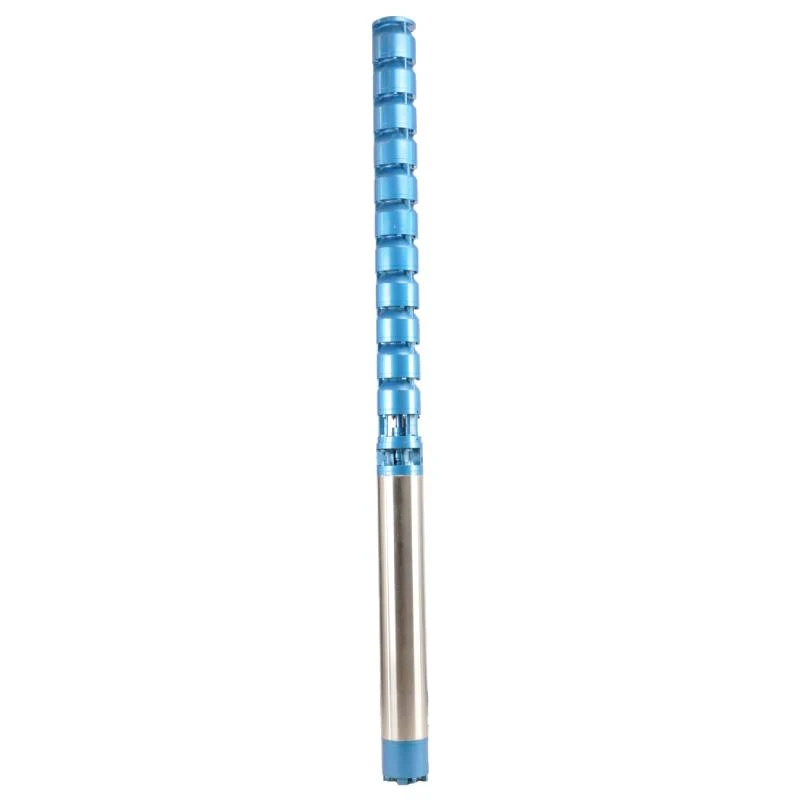Oct . 16, 2024 19:34 Back to list
Understanding the Operation of Submersible Well Pumps in Water Extraction Systems
Understanding How Submersible Well Pumps Work
Submersible well pumps are a vital component in modern water supply systems, particularly for agricultural, residential, and industrial applications. These pumps are designed to be placed underwater, often beneath the water level in a well, where they work to efficiently pump water to the surface. This article explores the mechanics behind submersible well pumps, their advantages, and their applications.
The Mechanics of Submersible Well Pumps
At its core, a submersible well pump consists of a motor and a pump assembly that work together to lift water from deep underground. Unlike surface pumps that sit above ground, submersible pumps are fully submerged in the water they extract. This design allows them to operate more efficiently, as they do not have to contend with the negative pressure that can affect surface pump performance.
1. Design Components A typical submersible well pump includes several key components
- Electric Motor The motor is usually located at the lower end of the pump. It is hermetically sealed to protect it from water intrusion and to ensure durability. - Pump Bowl Assembly This section contains multiple impellers that increase the pressure of the water, allowing it to be pushed to the surface. The impellers create a centrifugal force that lifts water through the pump. - Discharge Head This is the part of the pump that sits above ground, where the water is discharged. It also houses the electrical connections for the motor. - Suction Strainer Located at the bottom of the pump, the strainer prevents debris and larger particles from entering the pump, protecting its internal components.
2. Operation Process When the pump is activated, the electric motor spins the impellers within the pump bowl assembly. As the impellers rotate, they create a centrifugal force that pulls water into the pump through the suction strainer. The water is then pushed upward through the discharge piping and delivered to the surface.
The entire pumping process relies on buoyancy, meaning that the pressure remains balanced around the motor. This allows the pump to handle the water’s weight effectively, minimizing strain on the motor and increasing its lifespan.
how do submersible well pumps work

Advantages of Submersible Well Pumps
Submersible well pumps offer numerous advantages compared to other types of pumps
- Efficiency Because they are submerged, these pumps can operate with high efficiency, pulling water without needing to exert additional effort to overcome atmospheric pressure. - Low Noise Unlike surface pumps, submersible pumps operate quietly, as their motor is located underwater, which significantly reduces noise levels. - Space-Saving Design Submersible pumps have a compact design that takes up less space compared to surface pumps and can be installed in narrow wells. - Protection from Elements Being submerged protects the pump from environmental elements, potential vandalism, and other surface disruptions.
Applications of Submersible Well Pumps
Submersible well pumps find uses in various sectors due to their reliability and efficiency
- Agricultural Irrigation Farmers often use these pumps to extract groundwater for irrigation purposes, ensuring crops receive adequate water supply. - Residential Water Supply Many homes rely on submersible pumps to draw water from private wells, providing a safe source of drinking and household water. - Industrial and Commercial Use Industries may employ submersible pumps in processes that require water, such as cooling systems or equipment operation. - Wastewater Management Some submersible pumps are designed for sewage and wastewater applications, allowing for efficient pumping in sewage treatment facilities.
Conclusion
Submersible well pumps play an essential role in modern water extraction and management. Their unique design and efficient operation make them a preferred choice for a variety of applications, from agricultural irrigation to household water supply. As technology advances, these pumps continue to evolve, offering better performance, greater energy efficiency, and enhanced durability, making them a crucial component in sustainable water management practices. Understanding how submersible well pumps work can help users appreciate their value and make informed decisions about their water systems.
-
Submersible Water Pump: The Efficient 'Power Pioneer' of the Underwater World
NewsJul.01,2025
-
Submersible Pond Pump: The Hidden Guardian of Water Landscape Ecology
NewsJul.01,2025
-
Stainless Well Pump: A Reliable and Durable Pumping Main Force
NewsJul.01,2025
-
Stainless Steel Submersible Pump: An Efficient and Versatile Tool for Underwater Operations
NewsJul.01,2025
-
Deep Well Submersible Pump: An Efficient 'Sucker' of Groundwater Sources
NewsJul.01,2025
-
Deep Water Well Pump: An Efficient 'Sucker' of Groundwater Sources
NewsJul.01,2025
-
 Submersible Water Pump: The Efficient 'Power Pioneer' of the Underwater WorldIn the field of hydraulic equipment, the Submersible Water Pump has become the core equipment for underwater operations and water resource transportation due to its unique design and excellent performance.Detail
Submersible Water Pump: The Efficient 'Power Pioneer' of the Underwater WorldIn the field of hydraulic equipment, the Submersible Water Pump has become the core equipment for underwater operations and water resource transportation due to its unique design and excellent performance.Detail -
 Submersible Pond Pump: The Hidden Guardian of Water Landscape EcologyIn courtyard landscapes, ecological ponds, and even small-scale water conservancy projects, there is a silent yet indispensable equipment - the Submersible Pond Pump.Detail
Submersible Pond Pump: The Hidden Guardian of Water Landscape EcologyIn courtyard landscapes, ecological ponds, and even small-scale water conservancy projects, there is a silent yet indispensable equipment - the Submersible Pond Pump.Detail -
 Stainless Well Pump: A Reliable and Durable Pumping Main ForceIn the field of water resource transportation, Stainless Well Pump has become the core equipment for various pumping scenarios with its excellent performance and reliable quality.Detail
Stainless Well Pump: A Reliable and Durable Pumping Main ForceIn the field of water resource transportation, Stainless Well Pump has become the core equipment for various pumping scenarios with its excellent performance and reliable quality.Detail
